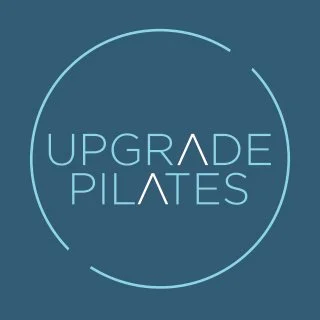Upside down
Are you ready to flip your world upside down for better health?
Inverting your body might sound challenging, but within the realm of Pilates, it's not only accessible but also essential. As we guide you through various spine shapes in a Pilates session, the act of dynamically inverting your body can offer an invigorating and immensely beneficial experience. It not only stimulates the lymphatic system to increase immunity but also plays a key role in stress reduction, promoting circulation, and soothing your nervous system.
In your Pilates session, an inversion typically starts from the round spine shape. Your initial encounter with inversion often occurs during the 'Rolling Like a Ball' exercise on the mat. While it’s not a complete inversion, it actively involves your round spine as you roll with your legs overhead, offering you a taste of what inversion can add to your workout. Other inversion examples where you move from the round spine shape include exercises like Rollover, Corkscrew and Jackknife on the mat, as well as the Airplane and Tower exercises on the Cadillac. However, the real magic happens towards the end of your Pilates session when we can invert our bodies for relaxation and other benefits.
Just starting out?
Begin with just one minute and progressively work your way up to three minutes. An accessible method for beginners is the simple ‘Legs-Up-The-Wall’ position, which you can easily practice at home. Lie on the floor with your legs resting vertically against a wall.
Half Hanging on the Cadillac
Want a more dynamic approach?
Consider visiting our studio and experience the ‘Half Hanging’ exercise on the Cadillac. As your practice evolves, you may even progress to the ‘Full Hanging’ exercise. These are traditional Pilates ending exercises, typically performed towards the end of your session, and designed to invigorate your mental clarity, uplift your mood, and promote blood flow to the brain. In addition to these mental benefits, you'll also notice improvements in flexibility, spine health, reduced back pain, and enhanced posture.
But, inversions aren’t suitable for everyone.
Inversions may lead to increased blood pressure and a slower heartbeat and can exert added pressure on your eyes. Therefore, it’s advisable to avoid inversions if you have high blood pressure, a heart condition, glaucoma, osteoporosis, a hernia or a history of back and leg fractures. Be sure to seek guidance from your doctor and please inform your teacher if you have any of these conditions. Your safety and wellbeing are our top priorities.
Why wait? Embrace the upside-down world, and let it elevate your life for the better.🌟
Check out our videos on Facebook @upgradepilatesstudio and Instagram @upgradepilates_studio.

